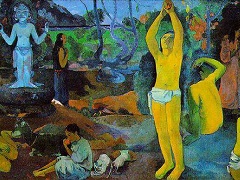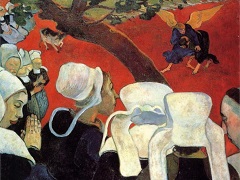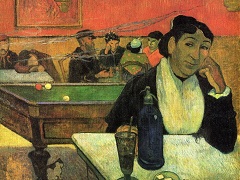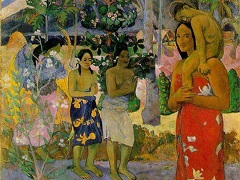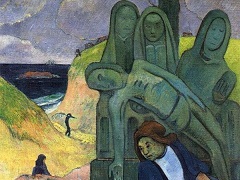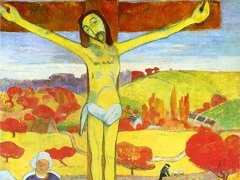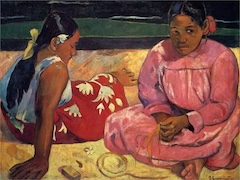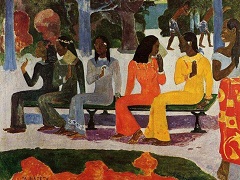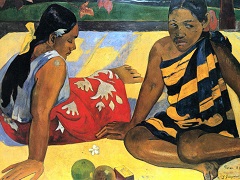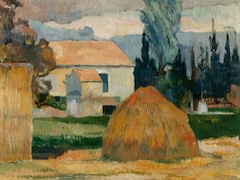Self Portrait, 1889 by Paul Gauguin

Gauguin painted many self-portraits, but few are as enigmatic as this one. It was among the work that Gauguin and his student Meyer Isaac de Haan created to decorate the dining room of the inn where they were staying in Le Pouldu, near Pont-Aven. In the six weeks after their arrival in late 1889, they made dozens of ceramic works, woodcarvings, and sculptures, and covered the walls with paintings. This self-portrait, and one Gauguin did of de Haan, were painted on a pair of cupboard doors.
At the time, Gauguin's likeness was described by friends as an "unkind character sketch"- a caricature. Today, it is the subject of intense analysis. Some see the artist casting himself in the role of Satan, others as Christ. What are we to make of the imagery - the apples that precipitate man's fall from grace; the halo over Gauguin's disembodied head; the snake that is both tempter of Eve and the embodiment of knowledge; the bold division into vivid yellow and red, evocative of both hellfire and the heat of creation? Perhaps it is most likely that Gauguin is revealing his conception of the artist as hero, and - almost to challenge his colleagues - of himself, particularly, as a kind of magus, a master who knows that he possesses the power of magic by virtue of talent and genius.

